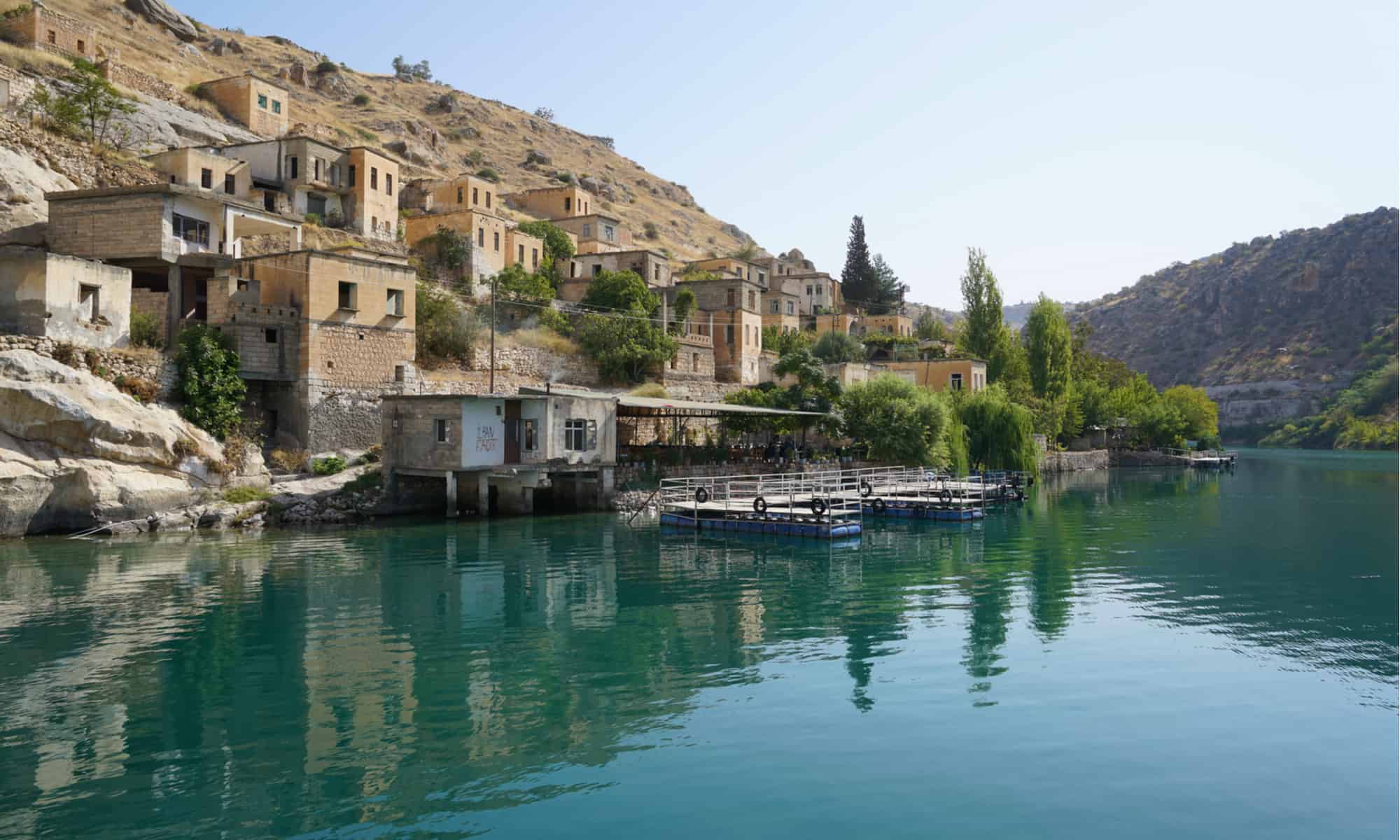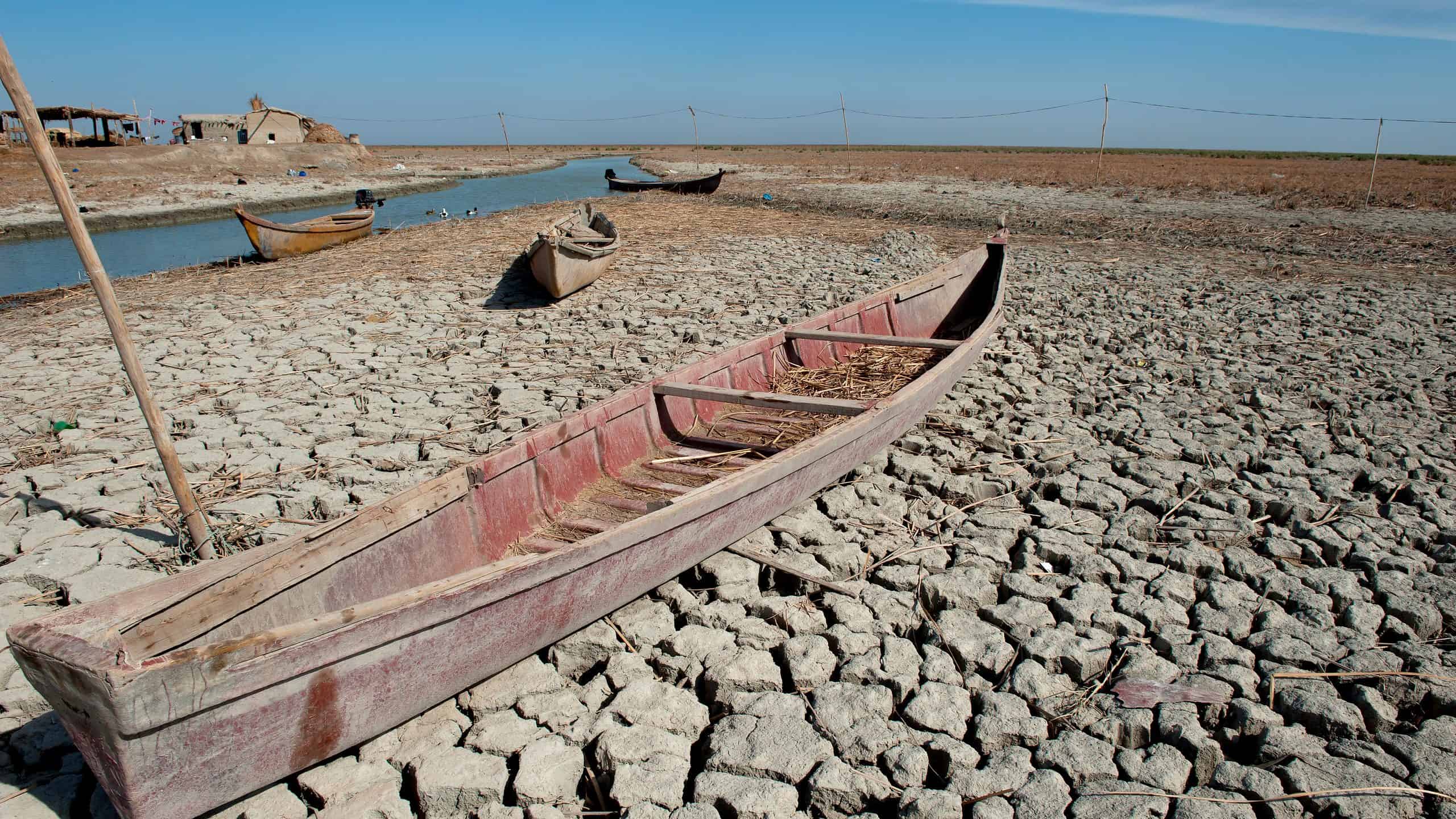The Euphrates River is an important body of water with a rich history. Along with the Tigris, the Euphrates is one of two defining rivers making up Mesopotamia (which literally translates to “between two rivers.”) The Euphrates is a relatively shallow body of water, but drought and other factors are putting this body of water at risk of drying up altogether.
Depth of the Euphrates River
The depth of the Euphrates River varies as it is the longest river in Western Asia. The river ranges from 3-32 feet deep. There have been numerous dams and reservoirs built at different parts of its length as it flows through Turkey, Syria, and Iraq. In places where there is a reservoir, the water tends to be deeper.
The Euphrates is only navigable by shallow-draft boats. As the name suggests, these vessels can navigate shallow waters without getting stuck.
Shallow draft boats can reach as far as the Iraqi city of Hit, located 1,200 miles upstream and only 53 meters above sea level, writes Shepherd Software. After this, shoals and rapids above Hit make the river commercially unnavigable.
History of the Euphrates River
The history of the Euphrates River dates back to ancient times. According to the New World Encyclopedia, water from the Euphrates led to the first flowering of civilization in Sumer, dating back to around the fourth millennium B.C.E. Sumer is the earliest known civilization in southern Mesopotamia.
Many great ancient cities were located near the Euphrates riverside. Struggles broke out between the empires of Babylonia and Assyria for control of the Iraqi Euphrates basin. Eventually, the Neo-Assyrian empire proved victorious. The Battle of Karbala, which involved supporters of Muhammad’s grandson, Husayn ibn Ali, took place at the banks of the Euphrates.

Birecik is an ancient city that sits along the banks of the Euphrates River.
©Sadik Yalcin/Shutterstock.com
The Euphrates in Islam and Christianity
The Euphrates River plays an interesting part in religion. Both Islam and Christianity speak of the Euphrates River drying up in association with the end of the world.
The Euphrates River is mentioned in the Book of Revelation in the New Testament of the Christian Bible. John the Apostle writes of the Euphrates River drying up as a sign of the end times and the Second Coming of Jesus Christ.
It’s worth noting, however, that the focus of Biblical prophecy is to call for repentance and to encourage people to change their ways while they still have time, rather than to predict a date and time for the end of the world.
In Islam, the prophet Muhammad predicted that the Euphrates River dries up prior to the apocalypse. According to a hadith, the dry river bed unearths a treasure of gold, which many people will fight and die to obtain.
Is the Euphrates River Drying Up?
Unfortunately, talk of the Euphrates River drying up isn’t ancient history. Drought, climate change, and other issues are putting the Euphrates at risk of drying up in the modern day.
The flow of water into Iraq has been cut significantly by hydroelectric projects in Turkey. As we’ve mentioned, the river is only navigable with shallow-draft vessels. Some ecologists fear the river could dry up completely by 2040. Already the receding waters have been catastrophic for fishermen in the area.

The Euphrates River is in danger of drying up due to multiple dams, droughts, water policies, and misuse.
©John Wreford/Shutterstock.com
According to the Inventory of Shared Water Resources, historically, the natural annual flow of the Euphrates at the Syrian-Turkish border was around 30 billion cubic meters (BCM). Data over the last 70 years shows a decrease to 25 BCM on average.
Other issues plague the river. In the Euphrates Basin in Iraq, Syria, and Turkey, much of the water is used for agriculture. Due to this, water quality has become a serious problem in the Euphrates River. The practice of dumping untreated sewage into the Euphrates and its tributaries only makes matters worse.
Treasures Uncovered in the Euphrates
While the receding waters of the Euphrates are bad news for a number of reasons, this phenomenon has unearthed a plethora of archeological discoveries. Ratib Ali al-Kubaisi, the director of Anbar province’s Antiquities Department, discussed one such finding with NPR.
Ancient buildings have emerged from the river bed in Iraq’s western Anbar province as the Euphrates River dries up. Archaeologists are now able to access sites that had been flooded by Saddam Hussein’s government damning the Euphrates in the mid-1980s.
As the religious texts seemed to predict, the drying up of the Euphrates also unearthed a variety of treasures. However, this opens up the area to looting. “The area is rich with things. You can find jewelry, coins, and documents — all these things are temptations for professional thieves,” Ratib told NPR.
Ecology of the Euphrates River
Fishing was once an important enterprise for those living near the Euphrates. Now as the river dries up, this industry becomes threatened. The family of freshwater fish species known as the Cyprinidae (commonly called the carp or minnow family) is the most common in the Euphrates-Tigris Basin.
One of the most important species of fish in the Tigris-Euphrates river system is the mangar fish (Luciobarbus esocinus). In fact, this species is sometimes called the “Tigris salmon.” Mangar are the largest fish in the Euphrates and have been known to reach up to 300 lbs! Other fish that live in the depths of the Euphrates include gar, spiny eels, common carp, and the yellowfin barbel.

Many common carp fish make their home in the Euphrates River.
©Franco Nicolas Pasini/Shutterstock.com
Many species of snakes live along the Euphrates, such as the Levantine viper, desert horned viper, and Persian horned viper. As the river dries up, these creatures are becoming more of a problem. Heat and dryness displace the snakes and bring them in contact with more people.
The Euphrates River provides life for various vegetation and wildlife along its banks. Vegetation of the marsh areas consists of reeds, rushes, and papyrus, according to the Freshwater Ecoregions of the World, (FEOW). Where the river flows through the mountains of southeast Turkey and their foothills plants species such as oaks and pistachio trees can grow.
Endangered Species Along the Euphrates
The Tigris-Euphrates river system is home to the endangered Euphrates softshell turtle. This large species of turtle has a smooth leathery shell and is typically dull olive in color. The Euphrates softshell turtle appears to be an opportunistic omnivore, eating a variety of sustenance such as plants, insects, crabs, and fish.
The Euphrates softshell turtle has a fascinating history, diverging from other species more than 40 million years ago. Unfortunately, this is an endangered species threatened by habitat loss, pollution, and fishing.
What to Do on the Euphrates River
Boat tours along the Euphrates are one way to explore the vast river. Some tour options can take visitors to Halfeti, a town on the east bank of the Euphrates. Today the old town is partially submerged underwater and is a popular tourist attraction.
Birecik is another town that sits on the banks of the Euphrates in Turkey. The town was actually built on a 400 ft. high limestone cliff high on the left/east bank of the river. Birecik has a rich history that dates back to 2,000 BC.
Where Is the Euphrates River Located on a Map?
The Euphrates River is the longest river in Western Asia, with a length of 1,740 miles (2,800km). It rises in Turkey and flows southeast across Syria and through Iran, before joining the Tigris River in the Shatt al-Arab, which empties into the Persian Gulf.
The photo featured at the top of this post is © yunus_oz/Shutterstock.com
Thank you for reading! Have some feedback for us? Contact the AZ Animals editorial team.






